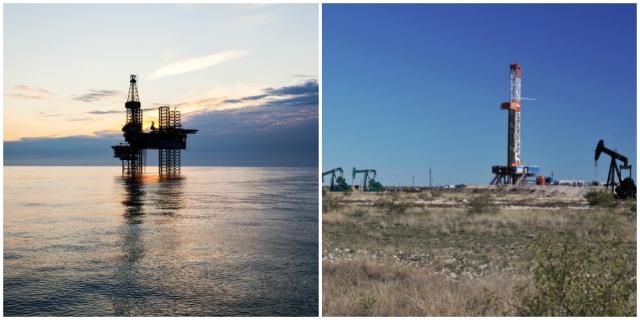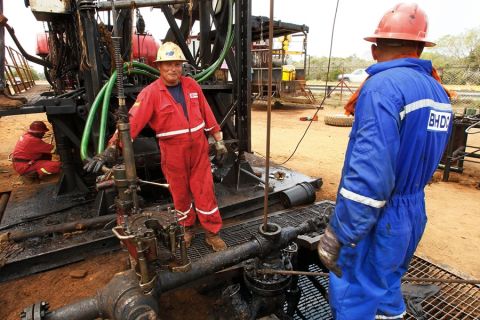
Companies are relying on existing infrastructure to uplift economics for exploration and production. (Source: Shutterstock.com)
HOUSTON—U.S. shale is still all the rage, with long laterals around 10,000 ft in the Permian Basin and 18,000 ft in Appalachia getting enough oil and gas from reservoirs to set production records.
But offshore, including the U.S. Gulf of Mexico (GoM), is competing with shale activity as breakevens continue to improve, according to industry experts.
Oil companies have lowered breakevens by some 40-60% since 2013, according to Tim Bjerkelund, senior management consultant for Rystad Energy. Speaking during the Rystad Energy and Pareto Securities Shale and Finance Forum, Bjerkelund pointed out how the breakeven for Royal Dutch Shell-operated Vito development in the GoM has dropped from $67/bbl to $35, putting it on par with $37 breakevens seen in the Permian’s Delaware sub-basin in New Mexico.
Similar stories are unfolding offshore in other parts of the world like the North Sea, where operator Equinor has brought down the breakeven for Johan Sverdrup Phase 1 from $40/bbl to $15.
Companies have revamped designs and worked closely with suppliers and partners, among other efforts, to bring down costs offshore, traditionally known for having expensive projects. The focus comes as offshore projects work to stay alive alongside more nimble shale projects as companies keep eyes on spending.
“We know that the shale companies have done the same,” Bjerkelund said.
He compared a Vito-type development to a Permian-type development to illustrate how the economics of the two could compare. Investing, for example, $2.5 billion in each of the projects yields essentially similar production profiles—the big difference being whether production is wanted sooner rather than later.
“In total, a Vito type of field would get 280 million barrels in total oil equivalents. A shale portfolio gets 200,” he said. “So, then the question is, do you want 200 tomorrow or do you want 280 over the next 20 years?”
But what’s the payout?
Assuming $60 Brent and $55 WTI, he used one of Rystad’s models to calculate how cash flows would look given investment and costs, and offshore had higher IRR and NPV, though shale also fared well.
Still, there are other elements to consider.
“You have to commit quite a bit more money upfront compared to shale where you start to get some revenue from that first well you’re going to drill,” Bjerkelund said.
However, optionality adds another element to the mix.
The key is investment in facilities that enable production over the long term, according to Bjerkelund.
Subsea wells tied back to existing production facilities have been reducing not only costs but also start-up times in the GoM.
“Similarly, in shale you can expand your portfolio by another well or by another 10 wells. So, both of these projects have apparently a lot of optionality,” he said, noting incremental drilling opportunities.
With offshore, an operator may find pockets of oil that it either didn’t know about earlier or didn’t sanction in the initial phase. Accessing these resources isn’t as expensive because of all of the previously invested money on the facility, he added, making for attractive breakevens.
Bjerkelund also pointed out how some of the biggest undeveloped discoveries in the GoM are second phases of projects. Phase Two of the BP-operated Kaskida is on the list.
“So, in total we actually have a project that is better than it initially was,” he said.
Companies like Anadarko Petroleum Corp., BP, Shell and Talos Energy are relying on existing infrastructure to uplift economics for exploration and production.
Infrastructure is also playing a key role in the Permian, where some companies have been challenged by insufficient takeaway capacity.
Oil giants Exxon Mobil Corp. and Chevron Corp., global players with major Permian-focused growth plans, are taking strategic steps.
“They’re building in a very structured way in order to be able to fully utilize the value of their infrastructure as they go along,” Bjerkelund said. “They’re used to this type of thinking; you build your infrastructure, you capture the big money and then you start adding option value to that development over the long term.”
Exxon Mobil has teamed up with Plains All American Pipeline and Lotus Midstream LLC to build the Wink-to-Webster pipeline that will connect the Permian Basin to the Gulf Coast.
Then, there are the technology and knowledge factors, both of which can lead to additional discoveries and reserves over time—both onshore and offshore.
But there are some offshore projects that are essentially “dead in the water” due to high costs and very long lead times, he said. The key is to have an offshore portfolio stocked with “real good projects because they are competing with shale every single day and that means that you need to do exploration properly but that’s a whole different ballgame.”
Velda Addison can be reached at vaddison@hartenergy.com.
Recommended Reading
US Decision on Venezuelan License to Dictate Production Flow
2024-04-05 - The outlook for Venezuela’s oil industry appears uncertain, Rystad Energy said April 4 in a research report, as a license issued by the U.S. Office of Assets Control (OFAC) is set to expire on April 18.
US Companies Ponder Future in Venezuela as Washington Pressures Maduro on Elections
2024-01-26 - The pressure is on again for Venezuela’s President Nicolás Maduro to announce a clear election timeline amid tensions following recent arrest orders and detentions of his opposition supporters.
US Orders Most Companies to Wind Down Operations in Venezuela by May
2024-04-17 - The U.S. Office of Foreign Assets Control issued a new license related to Venezuela that gives companies until the end of May to wind down operations following a lack of progress on national elections.
US Threatens to Not Renew Venezuelan Energy Sector License
2024-01-31 - The U.S. Department of State alerted Venezuela that it could decide not to renew General License No. 44 amid what Washington has labeled “anti-democratic actions.”





